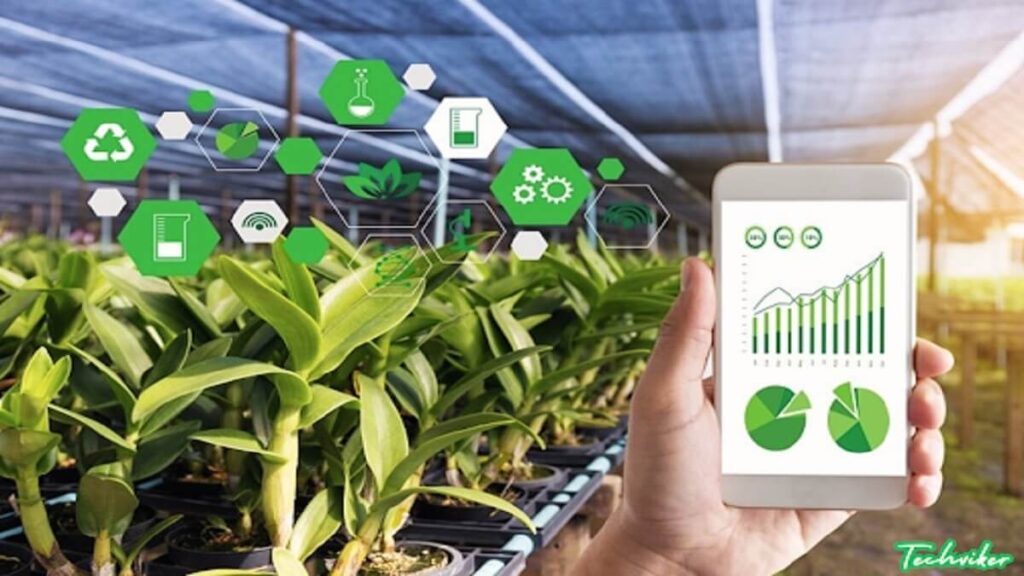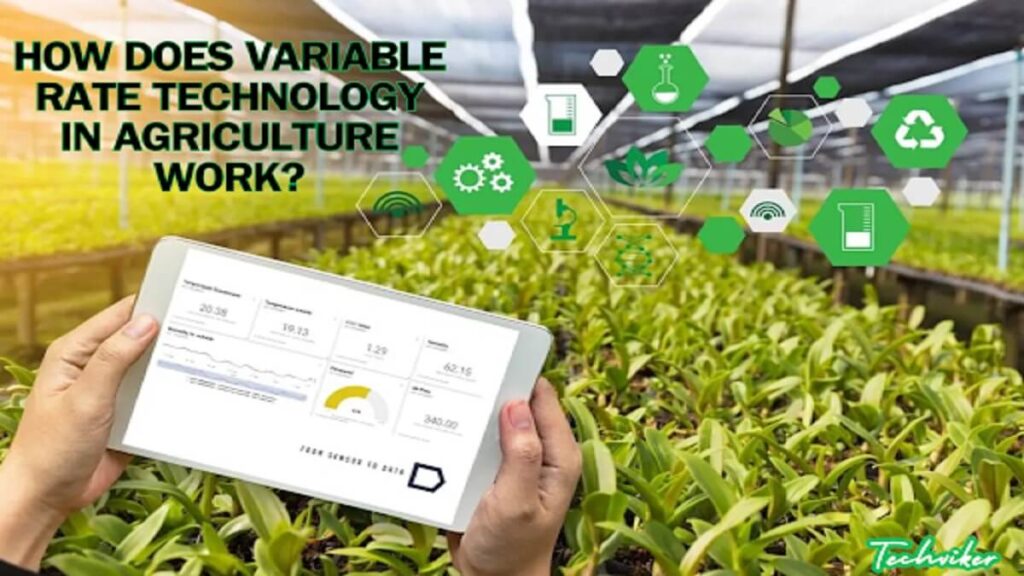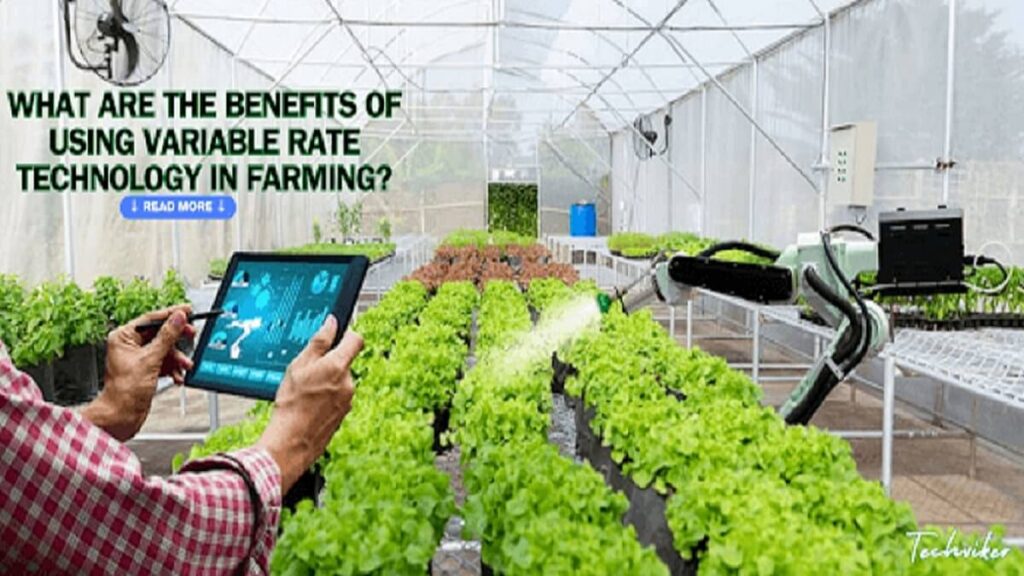Variable Rate Technology in Agriculture

Variable Rate Technology (VRT) in precision agriculture leads the charge, offering a smarter way to manage fields and boost crop yields. By tailoring inputs like fertilizers, water, and pesticides to the specific needs of different field zones, VRT helps farmers use resources more efficiently and sustainably.
This article explores VRT, how it works, and why it’s becoming a game-changer in modern farming. Dive in to learn more about the future of agriculture!
Table of Contents
What is variable rate technology in precision agriculture?
Variable Rate Technology (VRT) in precision agriculture allows farmers to apply inputs like fertilizers, water, and pesticides at varying rates across different parts of a field based on each zone’s specific needs.
This precision helps optimize resource use and enhance crop productivity.
Using data from sensors, GPS, and soil samples, VRT creates detailed field maps showing where more or fewer resources are needed. For instance, some areas may require more fertilizer due to lower soil fertility, while others need less. This targeted approach boosts yields and reduces waste and environmental impact.
Imagine a farmer who knows exactly where to add more fertilizer or water. This saves money and resources and leads to healthier crops. Whether adjusting irrigation based on soil moisture or applying pesticides only where pests are present, VRT makes farming smarter and more sustainable.
How does variable rate technology in agriculture work?

Variable Rate Technology (VRT) in agriculture uses precise data to apply inputs like fertilizers, water, and pesticides at different rates across a field.
This targeted approach ensures each part of the field gets exactly what it needs, optimizing resource use and crop productivity.
Data Collection:
- Soil Sampling: Farmers start by taking soil samples from various parts of the field. These samples are analyzed to determine nutrient levels, soil texture, and other key characteristics.
- Sensors and GPS: Modern tractors and farm equipment come equipped with sensors and GPS technology. These tools collect real-time data on soil moisture, crop health, and other variables as the equipment moves across the field.
- Aerial Imagery: Drones and satellites provide detailed images of the field, highlighting variations in plant health and growth patterns.
Mapping:
- Field Maps: The collected data is used to create detailed field maps. These maps show different zones based on soil characteristics, moisture levels, and crop health.
- Prescription Maps: These maps are translated into “prescription maps” that guide the VRT-equipped machinery. Each zone on the map has specific instructions for the rate of input application.
Application:
- Variable Rate Equipment: Tractors, sprayers, and other equipment equipped with VRT technology follow the prescription maps. As the machinery moves through the field, it adjusts the rate of input application in real time based on the data from the maps.
- Precision Application: For example, if a section of the field needs more fertilizer, the equipment increases the application rate. In areas needing less, the amount is reduced accordingly. This ensures optimal input use, minimizes waste, and maximizes crop yields.
What are the benefits of using variable rate technology in farming?

Variable Rate Technology (VRT) in farming offers numerous advantages, making agriculture more efficient and sustainable. Here are some key benefits of using VRT:
- Increased efficiency: VRT optimizes the use of fertilizers, water, and pesticides, ensuring each field part gets its needs met.
- Cost savings: By reducing the waste of agricultural inputs, farmers save money on fertilizers, water, and pesticides.
- Environmental benefits: Precise application reduces the risk of runoff and environmental pollution, promoting more sustainable farming practices.
- Improved crop yields: Tailoring inputs to specific field zones helps crops grow healthier and more uniformly, resulting in better yields.
- Enhanced soil health: VRT helps maintain soil fertility and structure over time by applying the right inputs.
- Data-driven decisions: VRT relies on detailed data, enabling farmers to make more informed decisions about their crop management practices.
- Adaptability: VRT can be customized to suit different crops and field conditions, making it a versatile tool for various farming operations.
- Reduced labour costs: Automation and precision in input application reduce the need for manual labour, lowering overall labour costs.
What are the challenges of implementing variable rate technology?
Here are some obstacles farmers might face:
- Initial costs: The upfront investment in VRT equipment and software can be high, making it a significant financial commitment for farmers.
- Technical know-how: Effectively using VRT requires a good understanding of the technology, which can be a learning curve for those unfamiliar with precision agriculture.
- Equipment requirements: Farmers need specialized machinery equipped with VRT capabilities, which can be expensive and require regular maintenance.
- Data management: Collecting, analyzing, and interpreting data from various sources can be complex and time-consuming.
- Integration with existing systems: It can be challenging to ensure that new VRT tools work seamlessly with existing farm equipment and practices.
- Variable results: The benefits of VRT can vary depending on factors like crop type, soil conditions, and weather, which might affect its effectiveness.
- Training and support: Farmers may need ongoing training and support to stay updated with the latest advancements and best practices in VRT.
- Return on investment: It might take time to see a significant return on the initial investment, which can be a concern for farmers looking for quick financial benefits.
What is the future of variable rate technology in precision agriculture?
Advancements in artificial intelligence, machine learning, and drone technology are set to shape the future of variable rate technology in precision agriculture, making farming even more efficient and sustainable.
Innovations such as real-time data analytics, autonomous machinery, and enhanced sensor technologies are poised to revolutionize how farmers manage their fields, leading to greater resource optimization and higher crop yields.
Conclusion
Variable Rate Technology in precision agriculture revolutionizes farming by optimizing resource use and enhancing crop productivity. Despite the implementation challenges, the benefits of increased efficiency, cost savings, and environmental sustainability make VRT a valuable tool for modern farmers.
As technology advances, the future of VRT looks promising. It will pave the way for smarter and more sustainable agricultural practices. Embracing VRT today means investing in a more productive and eco-friendly future for farming.
Read More: What is Core Technology?

